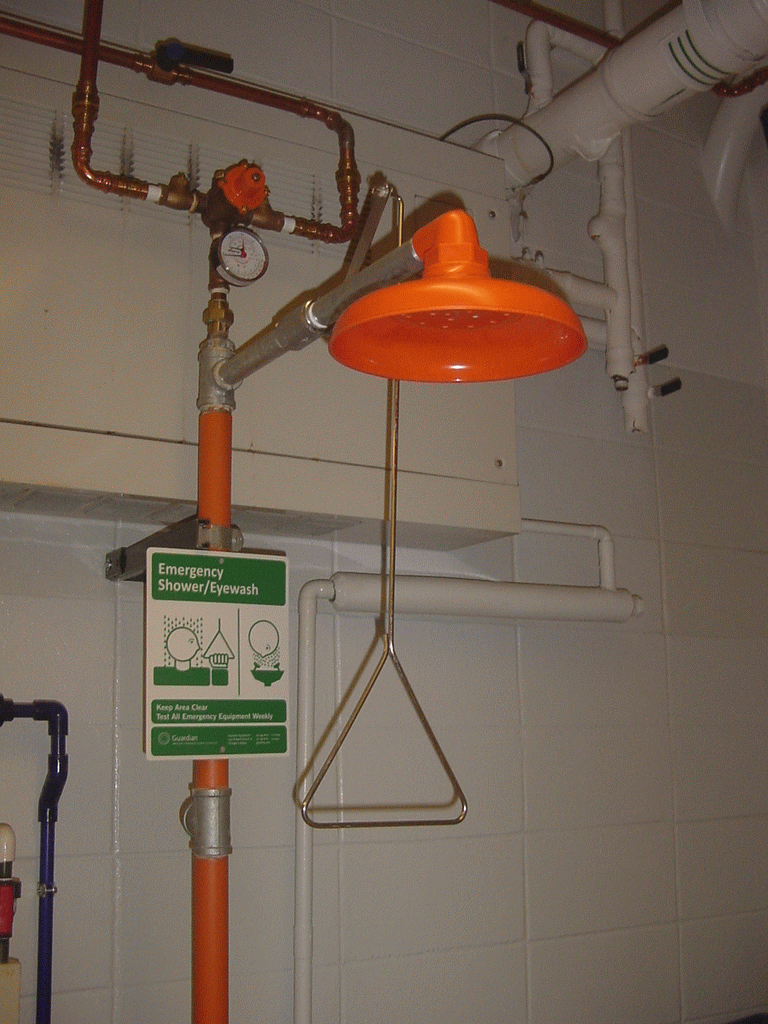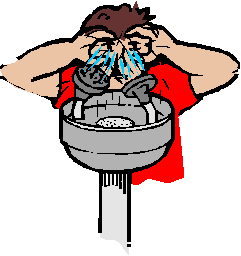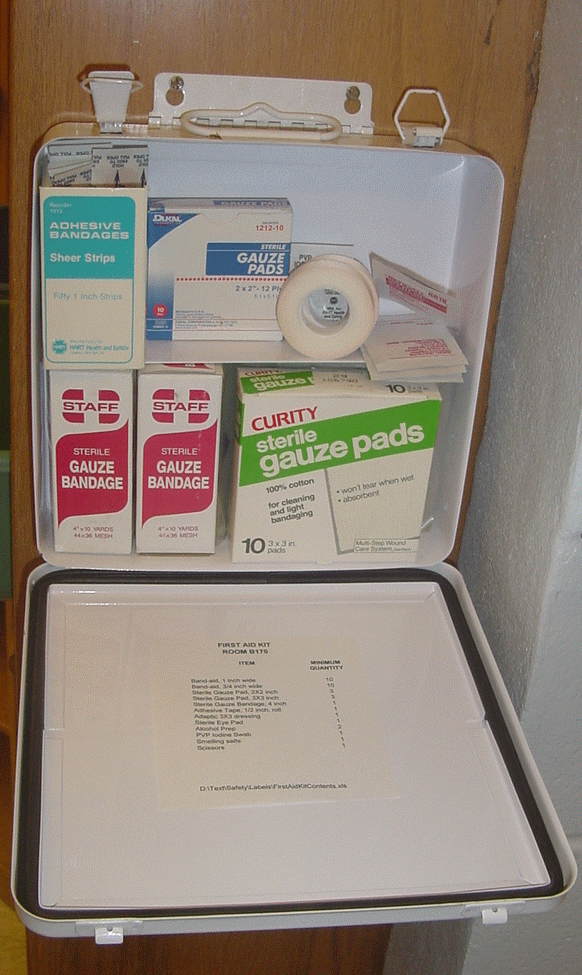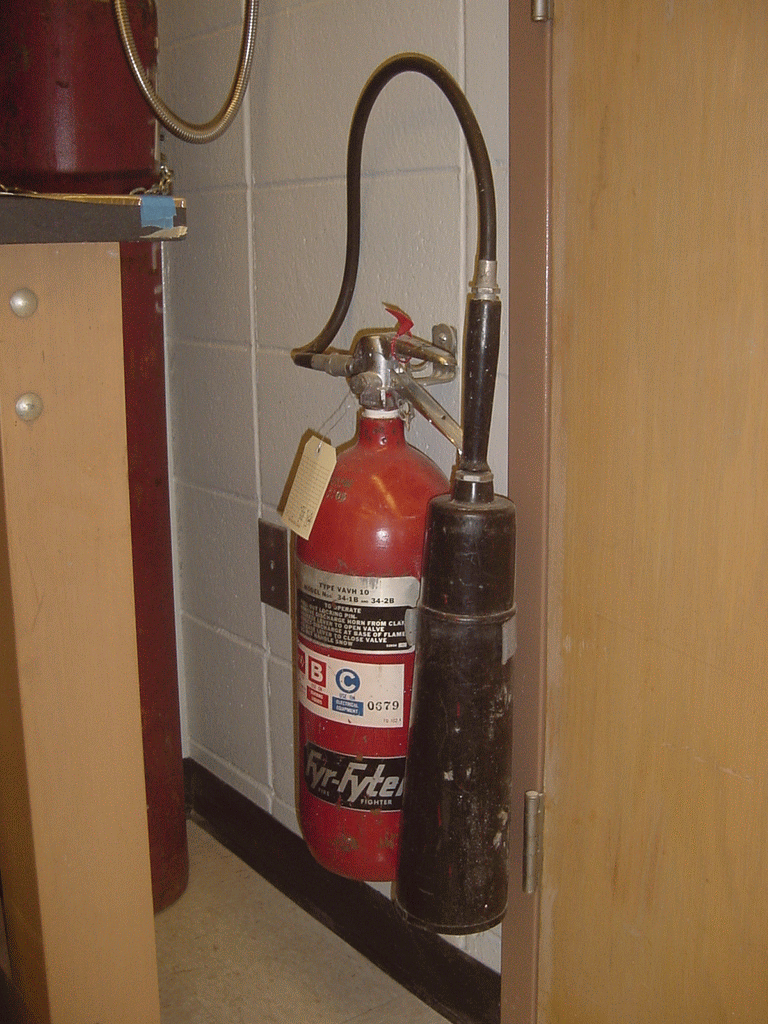  
Safety Equipment
Safety Equipment is any item that is used to minimize injury or damage when an accident occurs.
The safety equipment required in any laboratory should be specified in the hazard analysis.
Examples of Safety Equipment are:
|
|
|
| 1. |
Safety Showers:
Should be used if a hazardous substance has been splashed on skin or clothing or if clothing is on fire.
Showers should be flushed (turned on for a minute or so) at least monthly.
REM periodically performs a flow test on them. |
 |
| 2. |
Eyewash Stations:
These should be used in the unlikely event (you are wearing safety glasses or goggles) that some hazardous material is splashed in the eyes.
Eyewash stations should be flushed (turned on for a minute or 2) once a week.
REM periodically will test these. |
 |
| 3. |
First Aid Kits:
At Purdue, a first aid kit is optional because of the rapid response by the Purdue fire department.
If there is a first aid kit, it must have a list of the minimum contents, and must be kept stocked. |
 |
| 4. |
Fire Extinguishers:
Fire extinguishers should be located near the exit to the laboratory.
They should be used primarily as a means of escape, or for very small fires. |
 |
|